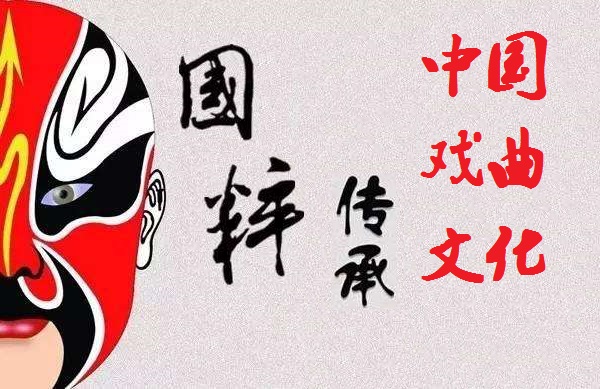
当前课程知识点:Culture and Tourism > Week 1: Cultural Tourism: Definitions and Concepts > 1.3 Cultural Heritage-2 > 1.3.2 Criterion(v): represent a culture or human interaction with environment
返回《Culture and Tourism》慕课在线视频课程列表
返回《Culture and Tourism》慕课在线视频列表
在本节中,我将继续讨论标准五和六
并将给出一些示例来说明它。
标准五,是作为一种文化的代表的传统人类住区、
土地使用或海洋使用的突出例子,
或人类与环境的相互作用,
特别是当环境在不可逆转的变化的影响下变得脆弱时;
根据这个标准,传统的聚落可以是城市的,也可以是农村的。
同样,土地使用也不仅适用于农村职业。
这个标准的关键方面是,属性必须
代表一个或多个特定的文化
而这些文化必须以某种方式突出。
有时假定这一标准的重点是
不可逆变化的影响
因为易受不可逆变化影响的特性
因此具有突出的价值。
事实并非如此。然而,这种脆弱性可能意味着,
以前充足的土地现在变得稀少,
下的现在也很稀少,可能是唯一幸存的
一种定居点或土地使用的例子。
关键词是“土地使用”。
必须有相当长的一段时间与
殖民或使用相联系,才能被认为是传统的。
定居或使用也必须是一种
文化或人类与环境相互作用的杰出表现。
也就是说,定居或使用必须在文化生活中是重要的,
或者人类的相互作用必须具有普遍的相关性。
让我举几个例子。
第一个例子是丽江古城。
丽江古城完美地适应了
这一重要商业和战略遗址的不平坦地形,
保留了高质量和真实性的历史城镇景观。
它的建筑因融合了几个世纪以来多种文化元素
而变得引人注目。
丽江还拥有非常复杂和精巧的古代供水系统,
而且至今仍然有效。
根据(v)标准,丽江古城整合了
山、河、树和建筑,创造了
人与自然统一的人居环境。
北侧以山脉向平原延伸为屏障,
东、南为平原,
形成良好的几何关系和生态布局。
叉状水系发源于白雪皑皑的高山,
流经村庄和农田。
黑隆池与分散的水井和泉水
构成了一个完整的水系统,满足了城镇防火、
生活和生产的需要。
水在老城区独特的建筑风格、城市布局和景观中扮演着重要的角色,
主要街道和小巷弄面朝
运河,一些建筑
和大量桥梁横跨运河。
作为一个展示人与自然和谐共处的人类栖息地的优秀范例,
老城区在土地利用上体现了人类的聪明才智。
安徽溪地和宏村南部的古村落
是我要讲的另一个依据。
西递和宏村这两个传统村落在很大程度上保留了非城市聚落的外观,
这种聚落在上个世纪基本上
消失或发生了变化。
他们的街道规划、建筑和装饰,
以及房屋与综合供水系统的结合,
都是独一无二的幸存范例。
根据标准(v),
中国传统的非城市聚落通常是例外的,
在过去的一个世纪中消失了一个非常大的出口,
在西堤村和宏村保存完好。
我们不仅列出了标准(v),
网站还根据标准3和标准4列出了它。
回忆一下以前的讲座,把它和两个标准联系起来。
西堤村和宏村是
一种典型的人类聚落,建立在封建时期和
繁荣的贸易经济的基础上。
第四个标准,在他们的建筑和街道模式,
这两个皖南的村庄反映了社会经济结构的
长期定居时期的中国历史。
最后一个例子是瑞士的拉沃斯葡萄园,
拉沃斯葡萄园的梯田,
沿着日内瓦湖南北岸延伸约30公里,
覆盖了村庄和湖泊之间的低山坡。
虽然有一些证据表明,该地区的葡萄树是在罗马时代种植的,
但现在的葡萄梯田可以追溯到11世纪。
这是一个杰出的例子,说明了几个世纪以来,
人类和环境之间的相互作用,优化了当地的资源,
从而生产出一种
对经济一直很重要的高价值葡萄酒。
标准(v): 拉沃斯葡萄园的景观是一个突出的例子,
展示了几个世纪以来人们
与他们的环境之间的相互作用,它以一种非常具体和富有成效的方式,
优化当地资源,生产一种非常有价值的葡萄酒,
这是当地经济的重要组成部分。
面对快速增长的城市住区的脆弱性,
促使当地社区大力支持保护措施。
以及基于标准三的拉沃斯,
并将其与以前的课程联系起来。
拉沃斯葡萄园的景观以一种高度可见的方式
展示了其近千年来的演变和发展,
通过保存完好的景观和建筑,
展示了对当地长期
文化传统的延续和演变。
以及基于标准(iv):
拉沃斯葡萄园景观的演变,
正如在地面上,展示了非常生动的故事赞助,
控制和保护的高度重视葡萄酒增长区域,
所有,这些贡献大幅洛桑的发展
及其区域和历史上扮演了重要角色地理-文化的地区。
-1.1 Introduction course outline and UNESCO World Heritage Program
--1.1.1 Introduction of culture and tourism course outline
--1.1.2 Introduction of UNESCO World Heritage Program(1)
--1.1.3 Introduction of UNESCO World Heritage Program(2)
-1.2 Cultural Heritage-1
--1.2.1 The meaning of culture heritage
--1.2.2 Criterion(i): masterpiece of human creative genius
--1.2.3 Criterion(ii): exhibit important interchange of human value
--1.2.4 Criterion(iii): bear a unique or at least exceptional testimony
--How can the public understand the importance of heritage?
-1.3 Cultural Heritage-2
--1.3.1 Criterion(iv): an outstanding example in human history
--1.3.2 Criterion(v): represent a culture or human interaction with environment
--1.3.3 Criterion(vi): associated with living traditions of outstanding universal significance
-1.4 Natural Heritage
--1.4.1 Natural heritage features, formations and criterions
--1.4.2 Cases studies of natural heritage
--Cultural landscape meanings: The case of West Lake, Hangzhou, China
--How to access heritage of your hometown?
-2.1 Mixed Culture and Natural Heritage
--2.1.1 Mixed heritage operational guidelines and cases (1)
--2.1.2 Mixed heritage operational guidelines and cases (2)
--2.1.3 Mixed heritage operational guidelines and cases(3)
-2.2 Authenticity, Integrity and Cultural Routes
--2.2.1 How to determine authenticity and integrity
--2.2.2 Heritage routes and heritage canals (1)
--2.2.3 Heritage routes and heritage canals (2)
--What do you think about cultural heritage categories?
-2.3 Special Heritage and Sustainable
--2.3.1 Physical remains of the history of technology and industry
--2.3.2 Transboundary Heritage, Serial Heritage, Serial/Transnational Heritage
--2.3.3 Intangible cultural heritage
--2.3.4 UNESCO World Heritage and Sustainable Tourism Programme
--Recovering the Memory of Ourselves for the Sustainable Cites
--Week 2 quiz
--What do you think about cultural heritage categories?
-3.1 The Australia’s Heritage System and Sydney Opera House
--3.1.1 The Australian Heritage System
--3.1.2 Case Study: The Sydney Opera House
-3.2 Role of the ISCCL and Cultural Landscape (1)
--3.2.2 Uluru-Kata Tjuta National Park
--3.2.3 Honghe Hani Rice Terraces
-3.3 Role of the ISCCL and Cultural Landscape (2)
--3.3.1 West Lake cultural landscape (1)
--3.3.2 West Lake cultural landscape (2)
-3.4 Rural Landscapes as Heritage
--3.4.1 ISCCL Principles Concerning Rural Landscapes as Heritage
-3.5 Case Study: Mongolian Altai
--3.5.1 Nature Culture Integration & the Mongolian Altai(1)
--3.5.2 Nature Culture Integration & the Mongolian Altai(2)
--Week 3 quiz
--Discussion: What do you think is the role of ISCCL?
-4.1 Introduction of the Meaning of 'landscape’
--4.1.1 Brief introduction of landscape and culture
--4.1.2 The conceptual framework of cultural landscape
-4.2 Landscape Values
--4.2.1 The word “landscape” itself and differences in Western, Eastern
--4.2.2 Cultural significance for heritage source
--Discussion: What do you think the cultural landscape attracts you?
-4.3 Reading the Landscape: Identification and Assessment
--4.3.1 Planning model for heritage conservation management policy
--4.3.2 Cultural landscape resources evaluation steps
--Article: Cultural mapping: Intangible values and engaging with communities with some reference to As
-4.4 Case Study: Wingecarribee Historic Landscape
--4.4.1 Case study:Wingecarribee historic landscape study(1)
--4.4.2 Case study:Wingecarribee historic landscape study(2)
--Week 4 quiz
--Discussion: What should we do to strengthen the protection of cultural landscape?
-5.1 Indigenous Tourism
--5.1.1 Indigenous tourism background
--5.1.2 World heritage and indigenous peoples
--5.1.3 Tourism issues at Canadian indigenous world heritage sites
--Discussion: What challenges indigenous World Heritage faces?
--Article: State conceptions of indigenous tourism in Chile
-5.2 Case Study and Conclusion: Great Expectations for Tourism
--5.2.1 Case study Pimachiowin Aki
--5.2.2 Conclusions:Great Expectations for Tourism
--Disussion: Do you have any experience of indigenous tourism?
--Week 5 quiz
-6.1 The Definition of Heritage in Heritage Performance Study
--6.1.1 The definition of heritage in heritage performance study
--6.1.2 Heritage performance and meaning making
--6.1.3 Two key issues emerging from qualitative study
-6.2 Heritage Performance - Evidence from Australia, England and USA
--6.2.1 Heritage performance - reinforcement
--6.2.2 Heritage Performance - inter-generational communication and social values
--6.2.3 Heritage performance - recognition and respect
--6.2.4 Heritage performance - education
--Article:Theorizing museum and heritage visiting
-6.3 The Conclusion of Heritage Performance
--6.3 The conclusion of heritage performance
--Week 6 quiz
--Discussion: What kinds of heritage performances have you learned in this week?

